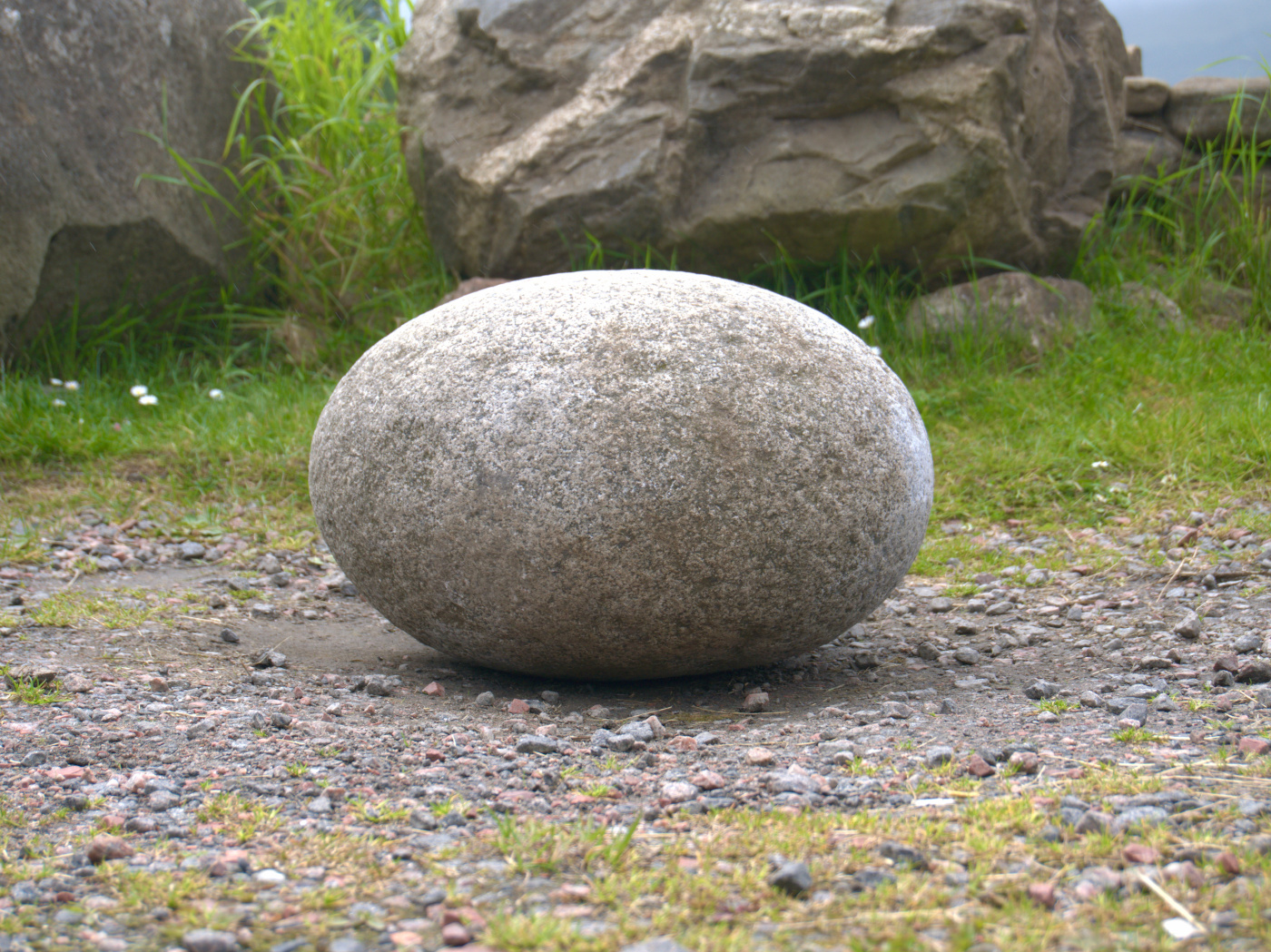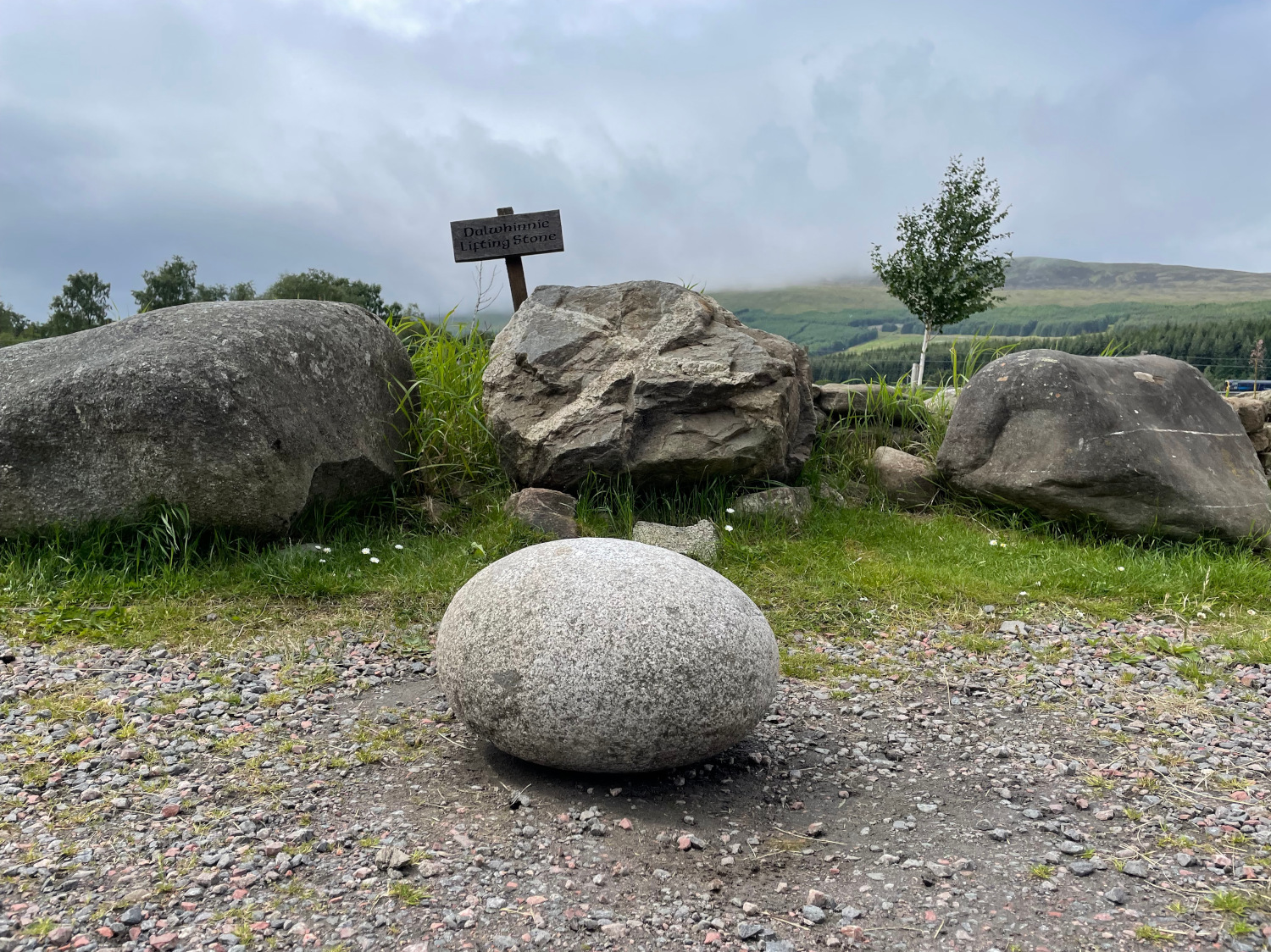Dalwhinnie Stone
The 102kg (225 lb) Dalwhinnie Stone is one of the most popular lifting stones in Scotland. The egg-shaped granite stone isn’t the heaviest, nor does it have a long and detailed history. But its location and features make it a great stone for newer stonelifters.

Challenge
The Dalwhinnie stone doesn’t have a specific challenge, but most people attempt one of the five lifts:
- Break the ground (put wind beneath the stone)
- Bring the stone to waist height (lap the stone)
- Bring the stone to the chest
- Bring the stone to the shoulder
- Press the stone overhead
One of the reasons why the stone is one of the most lifted stones in Scotland is because of its accessibility. Not just in terms of location, but its weight, surface, and balance make for an accessible challenge for new stonelifters.
History
The history of the Dalwhinnie stone is pretty stark – fittingly similar to the the village of Dalwhinnie itself which is home to a distillery, records for the lowest average temperatures in the UK, and little else.
The earliest known record of the stone is from around 1912 when a local newspaper reported that the well-known Highland Games athlete A.A. Cameron carried the stone into the bar of the hotel, placed it on the counter, and demanded a pint.
Sadly, there aren’t any references to the stone before Cameron’s feat, and so we don’t have any concrete information about the origins of the stone or its life before Cameron’s feat. But we can make a few educated guesses based on the stone itself and the area that it lives.
Firstly, the stone was almost definitely fished from the River Truim that runs about 50 meters away from the stone’s current location. The smooth weathered surface of the stone is typical of a river-worn lifting stone.
Secondly, one hint of the stone’s possible origins is in the village’s name. Dalwhinnie – from the Gaelic Dail Chuinnidh – can be translated as “meeting place”.
Dalwhinnie was a convenient stop along the road between Perth and Inverness. Before the days of motor vehicles the Inn would have had regular overnight visitors of people traveling between them. Therefore it may very well be the case that the Dalwhinnie Stone was lifted by people passing through the village in an impromptu stonelifting competition.1 Not a lot has changed either. Dalwhinnie is still used as a stopping point for people taking break from driving on the A9 road which runs nearby.
After A.A. Cameron’s feat, the stone seems to have laid dormant for several decades until the early 90s when it was re-discovered and subsequently featured in the book Of Stones and Strength. It was claimed that the Dalwhinnie Stone was a sister stone to the Stone of Heroes, a similar but larger (132kg) stone which was occasionally used at the Newtonmore Highland Games. However, the claim of the two stones being related doesn’t seem to have any weight to it.
Unfortunately, the stone doesn’t have much more of a history. Luckily, since the resurgence of stonelifting across the world in the last few years, the stone has become ever more popular amongst lifters and looks to continue on that path.
Location
The Dalwhinnie Stone is located in front of The Deerstalker Diner in Dalwhinnie, where it boasts the title of the “highest lifting stone in the UK” at an altitude of around 350m (1,148 feet).

The precise location is on our map.
In media
Briefly seen in Stoneland.
References
Stonelifting: An Ancient Test of Strength Revived — Martin Jancsics and Dr. Bill Crawford.
-
The Dalwhinnie Stone, Peter Martin via oldmanofthestones.com ↩
Read the liftingstones.org letters
Join thousands of other stonelifters who read the world's most popular stonelifting newsletter.